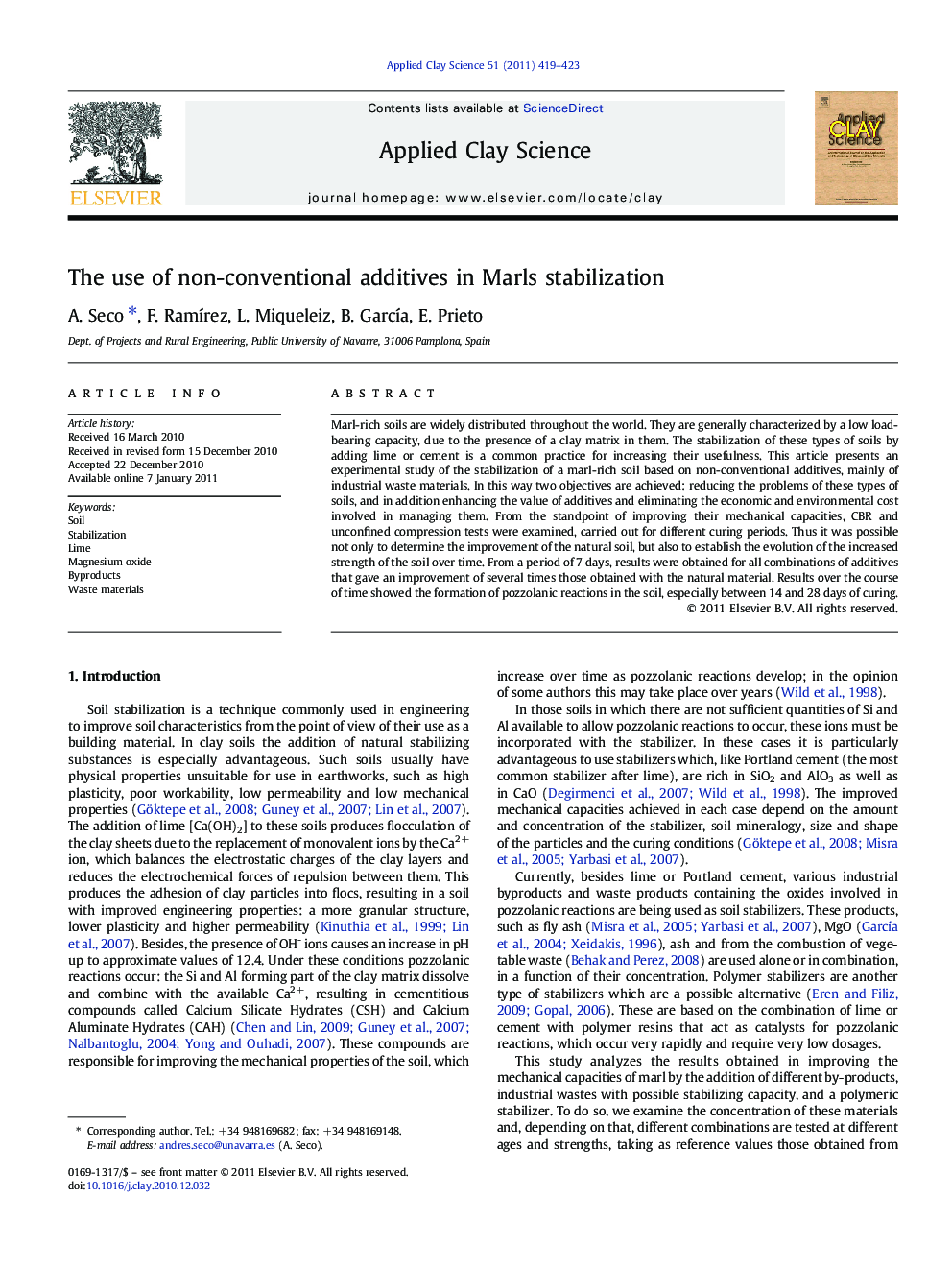| Article ID | Journal | Published Year | Pages | File Type |
|---|---|---|---|---|
| 1695592 | Applied Clay Science | 2011 | 5 Pages |
Marl-rich soils are widely distributed throughout the world. They are generally characterized by a low load-bearing capacity, due to the presence of a clay matrix in them. The stabilization of these types of soils by adding lime or cement is a common practice for increasing their usefulness. This article presents an experimental study of the stabilization of a marl-rich soil based on non-conventional additives, mainly of industrial waste materials. In this way two objectives are achieved: reducing the problems of these types of soils, and in addition enhancing the value of additives and eliminating the economic and environmental cost involved in managing them. From the standpoint of improving their mechanical capacities, CBR and unconfined compression tests were examined, carried out for different curing periods. Thus it was possible not only to determine the improvement of the natural soil, but also to establish the evolution of the increased strength of the soil over time. From a period of 7 days, results were obtained for all combinations of additives that gave an improvement of several times those obtained with the natural material. Results over the course of time showed the formation of pozzolanic reactions in the soil, especially between 14 and 28 days of curing.
Research Highlights► We show the potential in using different additives for the treatments of a marl soil. ► The properties of soil stabilized were determined both by laboratory tests. ► The best combinations were lime-RHFA and MgO-RHFA combinations.
